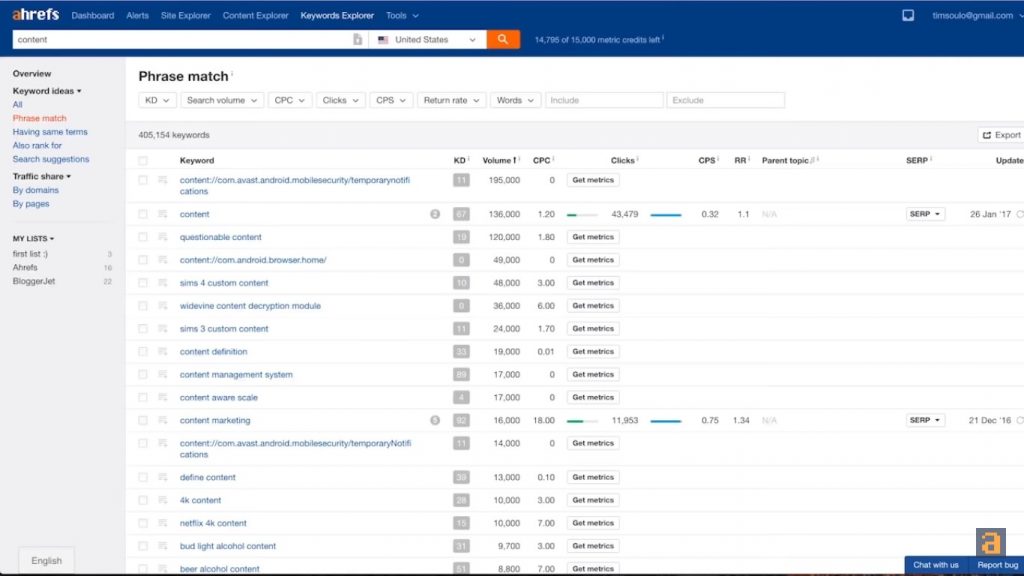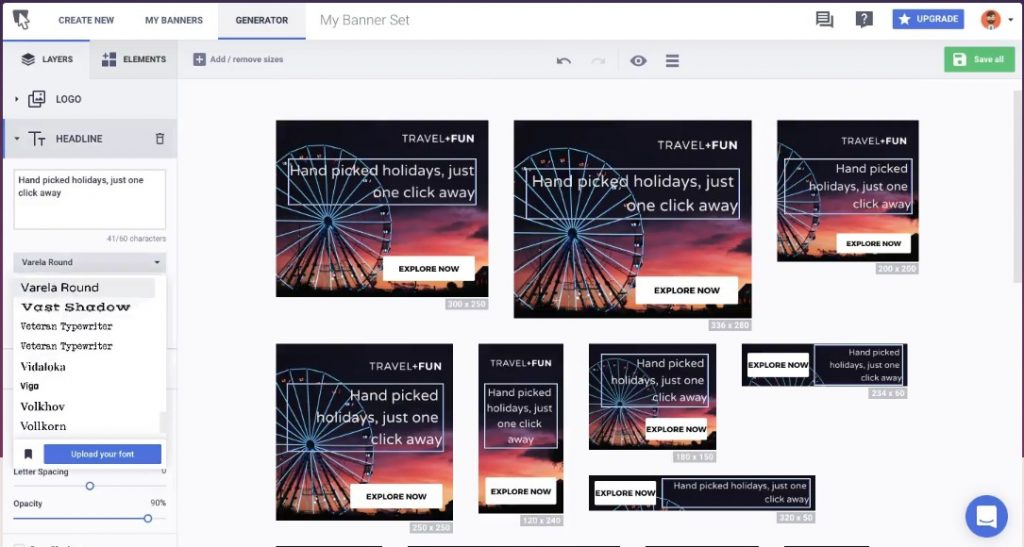In today’s digital marketing industry, content is king. People want to consume valuable content, they want answers to their questions, they want to read about topics they are interested in, regardless of who posts them and why.
What’s important is that content converts. Valuable content gets to be read and shared by the online community. It attracts more viewers and expands the pool of potential customers. In fact, companies that publish frequently (16 or more blog posts per month), attract 4.5x more leads than companies who do not publish content or publish it very rarely, once a week or even less.

72% of marketers say that content marketing increases their leads and the level of engagement. This is why, if you are not already creating content, I suggest starting immediately.
What you need to know is that a content marketing strategy has two main processes that depend directly on one another:
- Content creation
- Content promotion
1. Content creation
The first thing you need to consider is the content creation. This is and should be an ongoing task.
Main types of content that can make a difference for your brand and/or business:
- Blogging. Textual, written information is important as it gets indexed by the search engines and drives in organic traffic from all around the world. Also, people are constantly searching for information, answers to their questions, tutorials, walkthrough, descriptions and technical details about the things they buy, like or topics they are interested in. A blog facilitates the delivery of valuable information such as studies, reports and informative articles and attracts interested readers.
- Podcasting. Audio content is a trend that has been continuously growing over the last few years. It was to be expected since most of the audience uses smartphones and tablets connected to the internet, mobile devices that facilitate access to audio content. In fact, 51% of Americans reported having listened at least once to a podcast. It’s a form of content that can be consumed while you are engaged in other activities, commuting from one place to another or when you relax after a hard day of work.
- Video content. Each month, more video content is uploaded on the Internet that televisions managed to create in 30 years. The trend is growing and for good reasons. Almost 50% of Internet users look online for videos related to products or services they like, before making a purchase. YouTube is full of tutorials, video clips that describe products, tips, and tricks for specific products, etc.
- Infographics. They represent the best way to condense a lot of information into a single visual element that is easy to read and share on social media afterward. We know that 90% of the information sent to the brain is visual and that a lot of people are visual learners. Visuals convey messages instantly while the text needs to be read and processed by the brain. An image tells us a story immediately. It’s no wonder why 37% of content marketers use Infographics in their blog posts or why they convert and attract the information-hungry audience.
How can you create Insanely shareable content? Here’s how.
Content distribution is tied to the creation part, as everything you create needs to be published in order to generate traffic and conversions.

Main digital channels of distribution include:
- Main website and/or blog
- Social media pages
- Newsletters
- Audio and video feeds
- Advertising networks
2. Content promotion
A lot of this part is directly related to the production and in many cases, dependent on it. You need to have some content in order to promote it and at the same time, you need to create promotional content that is going to be used within a marketing strategy.
How do you promote your content and what channels are the most effective?
Well, the answer to the above questions depends mostly on the type of content you promote and what you want to achieve, as a marketer. It depends on strategy and goals.
A. Quality and value
Good content promotes itself if it is valuable and of good quality. How do you make it valuable?
- Topic research. You need to know your audience, what types of content they read, watch or listen to, and what questions they may ask. Then, you need to answer those questions and create the content that is most likely to be consumed, liked and shared by the target audience.
- Keywords research. You need them for good search engine ranking. You need them to allow your audience to find your content easier based on their searches. Google Trends is one of the best available if you are creating a generalist content. If you create for a specific niche, you will need something more thorough like Google Search Console, which allows you to analyze your performance and work on improving your organic traffic. In order to explore more possibilities and find out what and when to write about, you can use professional tools such as Ahrefs’ Keywords Explorer tool or LSI Graph.

- Content type research. Know your audience and know what type of content they consume more often. Is it text? Is it audio? Is it video? Find your answer and concentrate on creating that content type especially. You can focus on other types as well but your main focus should be based on the user intent. Also, do not create content you dislike or have no abilities for. If you don’t know how to write an article, try recording a podcast, a video blog or create visuals such as Infographics and social media content.
B. Social media
You can use social media as your main content delivery channel and focus on social media content only or, you can use it as a marketing channel for your blog, website or products. Moreover, social media makes a great marketing channel for podcasts and video feeds, since they depend solely on promotion not being indexed directly by the search engines. Also, young audiences who consume multimedia content are more likely to be there, on social media as well.
It is important, however, to always keep in mind that social media is almost entirely based on visual content, be it static or animated.
You need top-notch visuals in order to catch the users’ attention and succeed as a marketer. Typically, users browse their feeds and timelines and pay little to no attention to everything they see. However, once in a while they come across something really good and entertaining. They stop to take a look and this should be your goal.
How to create professional good looking visuals?
You have two options: You can either hire a professional designer or, use a professional tool.
Back in the day, when tools like Adobe Photoshop were the only existent professional solutions, things were quite tough for a marketer who had to learn a lot of tricks in order to create the designs they needed. Now, You have access to at least a dozen of professional easy to use web-based tools like Bannersnack, Stencil or Crello. Bannersnack, for instance, has built-in presents for all social media types and sizes and allows you to automate your banner creation by using a single template that can be saved for all social media channels instantly.

You can either create regular social media posts or social media banner ads, static or animated. All these tools come with easy-to-use interfaces, a lot of templates and stock images and fonts, and of course, professional plans available for all needs and budgets.
C. Paid advertising
If you have the required budget, paid advertising may help you expand your reach and improve awareness on your already published branded content.
Types of advertising channels you can choose:
- Search Ads
- Social media ads
- Sponsored posts (social media and third-party websites)
Why invest in paid ads?
Paid advertising converts. Not for everybody and not always, because there are a lot of variables you need to consider before being able to create a successful campaign. However, there are always success stories such as Jake Kassan’s and Kramer LaPlante’s, the guys behind the MVMT brand who built their campaign around Instagram ads. They managed to reach the 1 million US$ milestone in sales after 1 year, the 30 million US$ milestone after the second year and the impressive 90 million milestone in the third year.

D. Influencer marketing
Another great and effective way to promote yourself and your content, of course, is via influencers from your industry.
What you need to do:
- Find all the potential influencers
- Contact them and ask if they are willing to help you
- Engage them directly in your marketing efforts
The first part is the most difficult one. You need to scatter the Internet in search of influencers and if your time is limited, you will need to neglect other important activities during this time. Well, you don’t have to. There are tools that can help you with this process, one of the best being Social Animal.
The tool is ideal for content research and also, for influencer outreach. It features an algorithm that helps you find all the potential influencers in your niche, based on your main keywords. Moreover, you can see what they write, for who and what results they achieved as influencers.

Main features include:
- Content research. For any keyword you use, you can check with the app for deep insights on the published content. Find out how well it performs, what can you improve in this area and how to adapt to the market.
- Facebook integration. You can search through thousands upon thousands of pages and posts, study your audience, what kind of content to post and when to post it.
- Influencer marketing. Find all the popular and relevant influencers based on your main keywords. Browse content that was published by them and analyze its results.
- Monitoring competition. Keep track of your competition and all online posts and articles that mention them.
E. Guest posting
If you do not want to invest in paid ads but still, you want to reach out to a wider audience, you can try to engage in guest posting on some of the biggest and most influential blogs on your niche. Valuable links from your industry weigh heavily on search engine reputation and ranking and as of consequence, guest posting gets to be one of the best strategies you can engage in.
How to find blogs that accept third-party contributors? Just open a Google search and type in one of the following:
- Guest post
- Guest author
- Become a contributor
- Guest posting rules/ rules for guest posting
- Etc.
Search for anything related to guest posting and your topic. Find out blogs that allow guest contributors, read their rules and contact them.
Some will allow you to link back to multiple websites, while some will allow you only one backlink to your own blog or website. Every single link, if it comes from relevant sources and popular websites, is a good link. It’s great for self-promotion and also great for SEO and search engine ranking.
F. Newsletters
For a while, the number of newsletters I received in my inbox significantly dropped in numbers in frequency. Over the past few years, however, I have noticed the return of this easy-to-access service. It’s not a simple return, however, this time, everyone focuses on content, on the added-value of this content and on the user’s experience.
Newsletters of today are informative in nature, beautifully designed and the most successful ones, based on visual marketing as well, not just plain text. They are convenient because once they subscribe, the users don’t have to do anything else in order to get access to your content. The trick is to get them there, and for this, you will need a good reputation vis-à-vis your content creation and distribution and a professional contact page, designed to attract and convince.
Here’s an example from NameCheap:

As you can see, their offer includes several pieces of valuable content, a few sales pitches, a lot of visuals and white spaces. These are all essential elements of an effective newsletter template.
Conclusion
Content marketing is one of the best ways to attract more customers and fans and attach them to your brand. Content marketing converts and in most of the cases comes in very cheap or even without any additional costs besides the human resource and the time consumed with the creative process.
There are two processes a content marketing strategy depends on, two processes that depend on one another and cannot function separately: Creation and Promotion.
With this article, I tried to pinpoint some of the most important aspects of both these processes and some of the best strategies to be implemented on the road to content marketing success.
What other strategies are you using and to what extent?